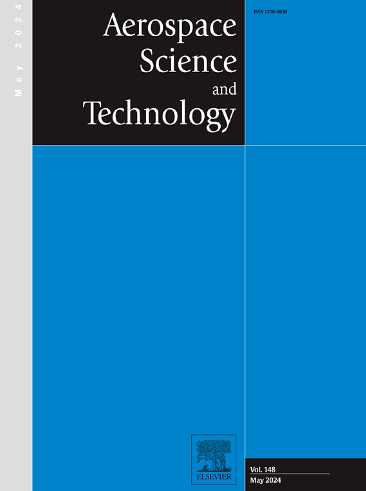Aerodynamics and ice tolerance of the large passenger aircraft advanced rear end forward swept horizontal tailplane with leading edge extension
IF 5
1区 工程技术
Q1 ENGINEERING, AEROSPACE
引用次数: 0
Abstract
The advanced rear end (ARE) forward swept horizontal tailplane (FSHT) may allow a more compact empennage, reducing weight, drag, and, thus, fuel burn. Large passenger aircraft (LPA) empennages are typically sized up to satisfy performance and handling requirements under critical icing conditions. One such requirement is sufficient low speed (negative) lifting performance for the roundout manouevre following 45 min of flight in a holding pattern in icing conditions. The FSHT geometry has the possibility to include a leading edge extension (LEX) in the droplet shadow zone of the fuselage contraction where it could have some protection from icing, allowing tail size reduction. This paper addresses the topics of three-dimensional inflight icing simulation and CFD analysis of iced tails in the industrial environment, inflight icing of the FSHT with LEX, and lifting performance and aerodynamics of the iced FSHT with LEX. Full aircraft air flow and droplet calculations were carried out using the finite element method with solution error-based anisotropic mesh adaptation, on a single geometry, to calculate inlet and outlet condition profiles for an empennage-only icing simulation domain. Full aircraft-representative, three-dimensional, multishot icing simulations were then carried out to calculate 45 min ice accretion in a holding pattern in Appendix C glaze icing conditions, for eight different FSHT geometries. Following that, three-dimensional CFD with the k-ω SST turbulence model was used to calculate the lifting performance and aerodynamics of each geometry, with and without ice, in a roundout flight condition from 0° to -15° angle of attack (AoA). The practice and feasibility of using three-dimensional multishot icing simulation in the LPA design environment are described. Analysis is then presented for three variations in FSHT forward sweep with a fixed gothic LEX, three variations in LEX chord with a 10° FSHT, and three variations in LEX span with a 10° FSHT. Iced lifting performance is found to correlate positively with forward sweep and exhibit a more nuanced relationship to LEX chord and span. In addition to the expected LEX vortex, a tip leading edge vortex is identified as a key ice tolerant FSHT lifting flow mechanism. Detailed flow field analysis provides insight into the complex interplay between the two flow mechanisms and the implications for iced lifting performance.
求助全文
约1分钟内获得全文
求助全文
来源期刊

Aerospace Science and Technology
工程技术-工程:宇航
CiteScore
10.30
自引率
28.60%
发文量
654
审稿时长
54 days
期刊介绍:
Aerospace Science and Technology publishes articles of outstanding scientific quality. Each article is reviewed by two referees. The journal welcomes papers from a wide range of countries. This journal publishes original papers, review articles and short communications related to all fields of aerospace research, fundamental and applied, potential applications of which are clearly related to:
• The design and the manufacture of aircraft, helicopters, missiles, launchers and satellites
• The control of their environment
• The study of various systems they are involved in, as supports or as targets.
Authors are invited to submit papers on new advances in the following topics to aerospace applications:
• Fluid dynamics
• Energetics and propulsion
• Materials and structures
• Flight mechanics
• Navigation, guidance and control
• Acoustics
• Optics
• Electromagnetism and radar
• Signal and image processing
• Information processing
• Data fusion
• Decision aid
• Human behaviour
• Robotics and intelligent systems
• Complex system engineering.
Etc.
 求助内容:
求助内容: 应助结果提醒方式:
应助结果提醒方式:


